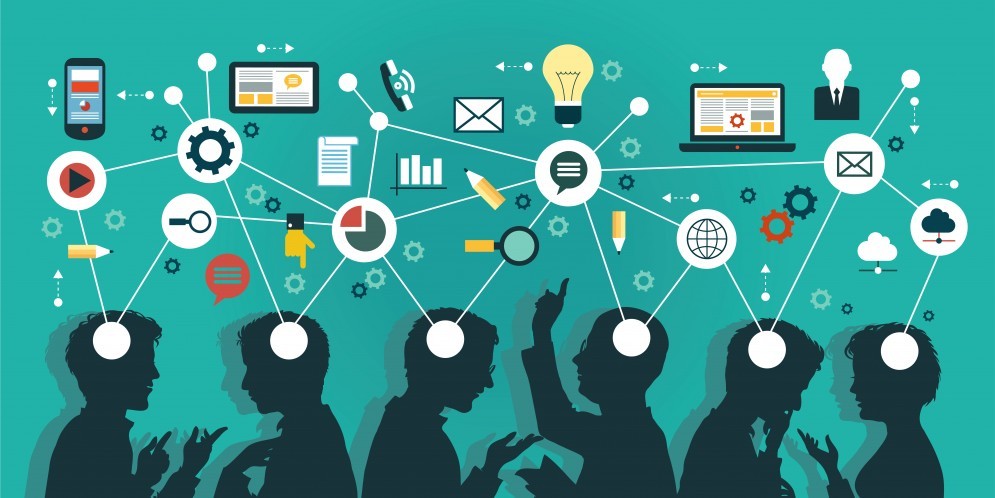How Adaptive Learning Helps High Schools Address Diverse Student Needs
In today’s rapidly evolving educational landscape, high schools face the challenge of catering to an increasingly diverse student population. Each student comes with unique learning styles, paces, and academic goals.
Traditional “one-size-fits-all” teaching models often fail to meet diverse needs, leaving some students behind and not challenging others enough. It is where adaptive learning comes into play.
- Adaptive learning customizes education to meet each student's needs by adjusting pace and style based on their progress and preferences
- It supports diverse learning speeds and styles, allowing students to learn in the way that best suits them and enhancing their understanding and retention.
- Training teachers is crucial for effectively using adaptive learning technologies, ensuring they can implement and maximize these systems in the classroom.
- Communication with stakeholders, including parents and administrators, ensures everyone understands and supports adaptive learning goals and methods.
- Personalizes the learning journey by using data and analytics to provide tailored educational experiences, helping each student reach their full potential.
By the end of this article, students will better understand adaptive learning and its benefits for diverse needs.
What is Adaptive Learning?

Adaptive learning is a tech-driven educational method customizing each student’s learning journey. By acting like a personal tutor, it constantly evaluates students’ progress and adapts the content and pace to suit their individual needs.
- Personalization: It offers a customized learning path for each student, catering to their unique strengths and weaknesses.
- Continuous Assessment: It evaluates students' understanding and adjusts the material accordingly.
- Tailored Content: It provides specific resources and exercises to target areas where students need improvement.
- Flexible Pacing: It allows students to learn quickly, ensuring thorough comprehension before moving forward.
- Enhanced Engagement: It keeps students motivated by offering material relevant to their current level of understanding.
Core Principles of Adaptive Learning
Adaptive learning enhances student engagement and success by using real-time data to track progress and address individual needs. It personalizes content to match each student’s skill level, ensuring they feel challenged but not overwhelmed.
Flexible pacing and style cater to different learning preferences, creating an efficient and equitable educational experience that maximizes student potential.
- Personalized Learning Paths: Each student receives a customized learning journey based on their strengths, weaknesses, and preferences.
- Continuous Assessment: The system monitors student progress and understanding through quizzes, assignments, and interactive activities.
- Data-Driven Insights: Adaptive learning platforms offer valuable data, helping educators understand student performance and identify areas for improvement.
- Real-time Feedback: Students receive immediate feedback on their work, allowing them to learn from their mistakes and stay on track.
Diverse Learning Needs of High School Students

High school students come with a variety of learning styles and educational goals. Understanding these differences is crucial for providing effective support and guidance.
Learning Styles
Different learning styles cater to various preferences in absorbing information. Understanding these styles can enhance educational experiences and outcomes.
- Visual Learners: These individuals best understand concepts through visual aids, such as diagrams, charts, and written instructions, as seeing information helps them process and retain it, and they may also benefit from using color coding or mind maps.
- Auditory Learners: These learners excel when information is presented through lectures, discussions, and audio materials, as they remember information better when it is delivered through sound, making activities such as listening to recordings, participating in group discussions, and repeating information aloud effective methods for them.
- Kinesthetic Learners: These learners thrive with hands-on activities and physical engagement. They learn by doing and often need to manipulate objects to grasp concepts fully. Role-playing, building models, or lab experiments enhance their learning.
Pacing
Students learn at different paces. While some grasp new concepts quickly, others require additional time and repetition to understand complex ideas fully.
- Quick learners often benefit from advanced challenges and more independent study.
- Students needing more time may excel with additional resources and structured practice.
- Diverse learning speeds require adaptable teaching methods to meet individual needs.
- Understanding these differences can enhance tailored educational strategies.
Academic Goals
High school students can take different paths after graduation. Some focus on academics, while others consider vocational training or direct entry into the workforce.
- Academic Preparation: Many students focus on studying core subjects and preparing for standardized exams as part of their college readiness. It involves rigorous coursework and extracurricular activities to strengthen college applications and gain admission to universities where they can further explore academic interests.
- Vocational Training: Some students choose vocational training programs to gain skills and certifications for trades or technical fields. These programs include hands-on training and apprenticeships, providing practical experience for direct entry into plumbing, electrical work, or automotive repair.
- Direct Workforce Entry: Other students enter the workforce immediately after high school. This path offers valuable work experience, skill development, and quicker financial independence. These individuals start in entry-level positions across industries, building their careers through on-the-job learning and advancement.
How Adaptive Learning Can Help
Adaptive learning is an educational method that leverages technology to tailor the learning experience to each student’s unique needs. It uses data-driven insights to adjust the curriculum’s pace and complexity, promoting more effective learning outcomes. Adaptive learning can address these diverse needs in several ways:
- Personalized Content: The platform can provide content in various formats, such as text, videos, simulations, and interactive exercises, catering to different learning styles.
- Individualized Pacing: Students can progress through the material at their own speed, ensuring they fully understand each concept before moving on.
- Targeted Support: The system can identify areas where students are struggling and provide additional resources, such as practice problems, tutorials, or one-on-one teacher support.
- Differentiated Instruction: Adaptive learning allows teachers to create differentiated assignments and assessments that cater to individual student needs.
Benefits of Adaptive Learning for Students and Teachers

Adaptive learning technology benefits both students and teachers. It creates a more engaging and effective student learning experience, tailoring education to individual needs. It offers teachers insights into student progress, helping them make better instructional decisions and adjust their teaching strategies.
Additionally, adaptive learning systems reduce administrative tasks by automating routine work, giving teachers more time for personalized instruction and support.
For Students:
- Increased Engagement: Personalized learning experiences keep students motivated and engaged in the learning process.
- Improved Performance: Adaptive learning helps students achieve mastery of the subject matter, leading to better grades and test scores.
- Greater Confidence: As students see their progress and receive positive feedback, their confidence in their abilities grows.
- Enhanced Learning Outcomes: Adaptive learning helps students reach their full potential by catering to individual needs.
For Teachers:
- Data-Driven Insights: Adaptive learning platforms provide teachers with valuable data on student performance, allowing them to identify areas where students need additional support.
- Time Savings: Adaptive learning frees up teachers' time to focus on individual student needs by automating many of the routine tasks associated with teaching.
- Improved Efficiency: Adaptive learning helps teachers differentiate instruction and provide targeted support more efficiently.
- Enhanced Teaching Practices: By providing real-time feedback and data, adaptive learning helps teachers continuously improve their teaching practices.
Challenges and Considerations for Implementing Adaptive Learning
While adaptive learning offers numerous benefits, there are also challenges and considerations for high schools looking to implement this technology:
- Cost: Adaptive learning platforms can be expensive to purchase and implement.
- Training: Teachers train to use adaptive learning technologies effectively.
- Technology Infrastructure: Schools need to have the necessary technology infrastructure in place to support adaptive learning.
- Data Privacy: It's important to collect and use student data responsibly.
Addressing Common Concerns about Adaptive Learning
Questions and concerns about any new educational approach are natural, and adaptive learning is no exception. Let’s address some of the most common concerns:
1. Will Technology Replace Teachers?
Not! Adaptive learning is not about replacing teachers with robots. It’s quite the opposite. Adaptive learning technology is a tool that empowers teachers to be even more effective.
It takes care of some more routine tasks, like grading and providing basic feedback, freeing up teachers to focus on what they do best: building relationships with students, providing individualized support, and fostering a love of learning.
Think of it as a powerful assistant that helps teachers personalize instruction and meet the unique needs of every student.
2. Will Students Become Overly Reliant on Technology?
Adaptive learning promotes active learning, not passive consumption. While technology plays a key role, it’s not about simply feeding students information. Instead, adaptive learning platforms encourage students to think critically, solve problems, and apply their knowledge meaningfully.
The platforms provide personalized challenges and feedback that help students develop essential skills like self-regulation, perseverance, and metacognition – the ability to think about their thinking.
3. What About Equity and Access?
Ensuring that all students have equal access to technology and support is crucial for the success of any adaptive learning initiative. Schools must address the digital divide by providing devices, internet access, and technical support to students who need them.
It’s also important to provide professional development for teachers so they can effectively use adaptive learning technologies and differentiate instruction for all learners. By proactively addressing these issues, schools can ensure that adaptive learning benefits all students, regardless of their background or circumstances.
Adaptive learning is a powerful tool that can help high schools create a more equitable and effective learning environment. By thoughtfully addressing common concerns and implementing these technologies, we can empower all students to reach their full potential.
Practical Recommendations for High Schools

Here are some practical recommendations for high schools looking to adopt adaptive learning strategies:
- Start Small: Begin by piloting adaptive learning in a few classrooms or subjects before scaling up to the entire school.
- Choose the Right Platform: Select an adaptive learning platform that aligns with your school's needs and budget.
- Provide Teacher Training: Ensure teachers receive adequate training on using and integrating the adaptive learning platform into their teaching practices.
- Communicate with Stakeholders: Keep parents, students, and other stakeholders informed about the benefits of adaptive learning and how to implement it in the school.
Adaptive Learning and the Future of Education
Adaptive learning isn’t just a passing trend; it’s at the forefront of a broader transformation in education. This approach aligns perfectly with several key movements shaping the future of learning:
- Personalized Learning: The idea of using adaptive learning to cater to each student's unique needs is becoming more popular. It is a method that personalizes education by customizing learning paths, pacing, and support.
- Competency-Based Education: This model focuses on mastering skills and knowledge rather than accumulating credits. Adaptive learning helps students achieve mastery by providing personalized feedback and support until they demonstrate proficiency.
- Data-Driven Instruction: Educators are increasingly using data to inform their teaching practices. Adaptive learning platforms provide a wealth of data on student performance, allowing teachers to identify areas where students need additional support and adjust their instruction accordingly.
Adaptive learning prepares students for the 21st-century workforce by fostering critical thinking, problem-solving, and adaptability. It encourages students to take charge of their learning and face challenges.
The future of adaptive learning is promising, with AI and machine learning enhancing personalized experiences and offering real-time feedback. Picture AI tutors offering tailored support and virtual reality simulations for career exploration.
Final Thoughts
Adaptive learning is revolutionizing the way high schools cater to diverse student needs. Adaptive learning empowers students to reach their full potential by personalizing the learning journey and providing targeted support.
It’s not just about keeping up with the times; it’s about creating a more equitable and effective learning environment where every student thrives.
- Explore the possibilities: Delve deeper into the world of adaptive learning. This innovative approach tailors educational experiences to individual student needs and discovers how it can transform your high school's teaching methods and student engagement.
- Embrace the future of education: Be a pioneer in your school by championing the adoption of adaptive learning strategies. Lead the way in integrating cutting-edge technology and data-driven insights to enhance educational outcomes.
- Empower your students: Provide them with the personalized learning experiences they deserve, catering to their unique strengths and areas for improvement. Watch them flourish as they gain confidence and excel in an environment that supports their learning journey.
Ready to experience the power of adaptive learning firsthand? Book a demo with PathBuilder today and discover how we can help you create a brighter future for your students.
Author
-

The PathBuilder team is a dynamic group of dedicated professionals passionate about transforming education through adaptive learning technology. With expertise spanning curriculum design, AI-driven personalization, and platform development, the team works tirelessly to create unique learning pathways tailored to every student’s needs. Their commitment to educational innovation and student success drives PathBuilder’s mission to redefine how people learn and grow in a rapidly changing world.
View all posts

















The PathBuilder team is a dynamic group of dedicated professionals passionate about transforming education through adaptive learning technology. With expertise spanning curriculum design, AI-driven personalization, and platform development, the team works tirelessly to create unique learning pathways tailored to every student’s needs. Their commitment to educational innovation and student success drives PathBuilder’s mission to redefine how people learn and grow in a rapidly changing world.